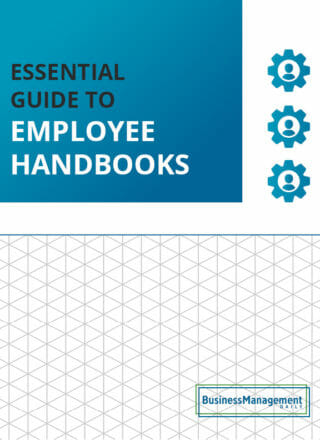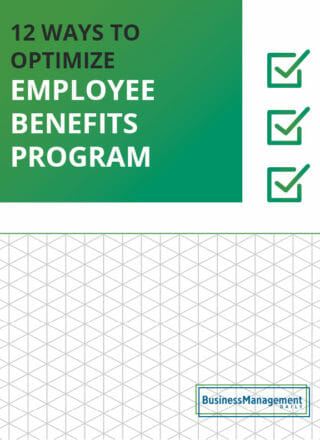ADA compliant substance abuse policy
 Balancing safety and accommodation in the modern workplace
Balancing safety and accommodation in the modern workplace
Substance use in the workplace presents a wide array of concerns and liabilities, from safety concerns to reputational damage. However, navigating substance abuse policies can be a tricky thing for employers in the current age. Laws regarding the use of drugs vary from state to state, as do the guidelines on what testing is allowed.
Complying with the Americans with Disabilities Act (ADA), an essential piece of federal legislation that protects people with disabilities from discrimination in the workplace is also an issue.
Under the ADA, issues such as substance use disorder can be viewed as disabilities, granting workers greater protections.
Crafting a substance abuse policy that balances the need to accommodate those struggling with addiction and the importance of maintaining a safe and productive work environment can be complex.
What is a substance abuse policy?
A substance abuse policy is a set of guidelines implemented by employers to address the use of drugs and alcohol in the workplace. These policies promote a safe, healthy, and productive work environment by defining prohibited behaviors, outlining consequences, and providing employee support resources.
The importance of a substance abuse policy
Having a substance use policy in place provides many benefits for employers, such as:
- Enhancing workplace safety: Building a drug-free workplace through your substance use policy can reduce accidents and injuries caused by impairment.
- Improving productivity: These policies promote a focused and productive work environment and minimize distractions or poor performance associated with substance use.
- Reduced absenteeism and turnover: A substance abuse policy can address potential causes of employee absence and attrition.
- Protection of company reputation: A substance use policy demonstrates a commitment to a safe and healthy workplace.
- Compliance with legal requirements: Your policy will help ensure adherence to relevant laws and regulations.
Substance abuse hurts the personal well-being of your employees. Therefore, a drug-free workplace policy is important. Moreover, you should provide resources like substance use prevention and employee assistance programs. Ultimately, this can help employees live healthier and happier lives.
Legal considerations for substance abuse policies
Several major legal concerns must be considered while crafting and administering a substance abuse policy. Here are the major ones to keep in mind.
Substance use and the ADA
The Americans with Disabilities Act (ADA) prohibits employers from discriminating against applicants and employees with disabilities and requires them to provide reasonable accommodations to support them at work.
The ADA defines a disability as a physical or mental impairment that substantially limits one or more major life activities, a record of such impairment, or being regarded as having such an impairment.
Addiction can undoubtedly limit someone’s major life activities and ability to care for themselves. Therefore, the ADA does generally cover those in active addiction, with a history of addiction, or who are regarded as having a substance use condition.
The last part is essential because someone doesn’t need to consider themselves an addict to be covered. Often, people who overuse alcohol, for example, won’t consider themselves as having a substance use disorder, but their friends, family, or co-workers will.
Thus, your employees constantly coming in hungover but saying they don’t have a problem could still be covered under the ADA.
Employer rights and responsibilities under the ADA
In general, the ADA does allow employers to enforce reasonable workplace guidelines against working under the influence of drugs and alcohol. The ADA also does not consider a pre-employment drug test to be a medical evaluation, nor does it expressly prohibit or encourage drug testing of applicants.
Employers may also take action against employees for disruptive or inappropriate behavior, even related to substance use. However, accommodation does need to be provided for those seeking addiction treatment, such as making scheduling accommodations for someone to make it to AA or NA meetings.
Navigating the use of legally prescribed drugs
While it’s valid to want to create a drug-free workplace, you do need to be cognizant of how you approach prescription drugs, or at least those that have been legally prescribed.
People with conditions such as ADHD, PTSD, anxiety, and chronic pain should still have equal opportunity to be a part of the workforce, even if their conditions require the use of controlled substances that you may typically disallow.
Under the ADA, you must be able to show that drug inquiries are “job-related and consistent with business necessity.” For example, if a truck driver takes a prescription medication that causes sleepiness, the safety hazard they may pose is likely a legitimate business concern.
Here are some more tips to help ensure your prescription drug inquiries stay within the legal limit:
- Remove blanket requests for drug information from your policy.
- Require everyone involved with drug testing and inquiries to document the reasons for needing information about prescription drugs and how the information is related to employees’ jobs. This documentation will inform employees of the situation and encourage managers to think before acting.
- Stress confidentiality. Employees’ prescription drug information will only be shared with people with a legitimate business need to know. Managers should also be aware of their confidentiality obligations.
- Evaluate procedures. Can employees be allowed to send their prescription information directly to the company doctor, the drug testing company, etc., and skip managers’ middleman hands?
- Remember to check applicable state privacy laws.
State laws
When crafting any policy, you must consult your state and local laws. This is especially true with drug testing and substance use policies, as state guidelines (and what drugs are legal in each state) vary quite a bit.
States like New York, California, Montana, and more have protections for employees who use marijuana medically or recreationally. Meanwhile, in other states, marijuana is still considered an illegal drug, and protections are not granted for employees who use it.
This may mean you must have different employee policies in other states if you employ people across multiple regions.
Discrimination laws
You should consider general anti-discrimination laws, such as the Civil Rights Act. These are in addition to ADA discrimination protections and state laws regarding discrimination against marijuana users.
Sometimes, stereotypes and biases exist about specific demographics using drugs more frequently. Consequently, this can lead to discriminatory practices.
These practices might appear in drug testing and substance use policy enforcement. Remember that addiction is a disease that impacts people of all races, religions, ages, and sexual orientations. Your policy should not be written or enforced in a way that unfairly targets any specific group.
Components of an effective substance abuse policy
Here are the core components of a written substance use policy.
Statement of purpose
Clearly state the purpose of the policy. Explain that the goal is to create a safe, drug-free work environment and to comply with state and federal laws. Some goals you may mention include:
- Keeping employees safe while operating workplace equipment or machinery.
- Minimizing concerns such as absenteeism and workplace conflict that can arise from drug abuse.
- Providing resources to assist employees in safely recovering from drug and alcohol abuse in a way that promotes personal well-being and workplace safety.
- Comply with applicable laws and respect employee privacy and confidentiality regarding drug testing and substance use concerns.
Expectations and guidelines
Explain your expectations for employees and their conduct regarding a drug-free workplace. Clearly state your expectations around substance use and explain how you define substance misuse.
When creating these expectations, you must consider your company culture, workplace safety concerns, and where you employ people.
For example, is drinking alcohol at work completely forbidden, or do you have a culture where it’s more normalized and acceptable to have a drink during a client dinner or at an office happy hour? Are you in a state where marijuana use is legal?
In this case, you would likely expect employees to show up sober. However, you might not expect them to test negative for marijuana on a drug test. This is because marijuana can stay in a person’s system for a long time.
Employer responsibilities and support
Explain your role in this policy and what resources you offer to help employees manage their substance use. This is a good place to mention your confidentiality policy and how you privately handle drug test results and employee admissions of substance use.
You can also encourage employees to seek resources if they are struggling with substance use. They can contact you, a hotline, or their EAP. In addition, explain that you will comply with all privacy guidelines.
This includes ADA requirements and FMLA time off requirements. Your goal is to support employees seeking treatment for substance use.
Consequences for violating the policy
List out what will occur if an employee violates this policy. Often, this portion will be a bit broader, using language like “violation of this policy will result in disciplinary action” and listing a few possible actions up to and including termination.
This slightly open-ended approach is necessary for a few reasons. First, violations of the substance abuse policy can take many forms and have different levels of severity. Therefore, you’ll want to be flexible in how you address them.
Someone using a company vehicle or heavy machinery while intoxicated will generally warrant a stronger response. This is especially true if they potentially harm someone.
However, you may choose a less severe response for minor instances. This is appropriate when those instances do not present significant safety risks.
Addressing substance abuse in the workplace
Here are some tips for employers in recognizing and addressing substance misuse in the workplace.
Recognizing the signs of substance misuse
Supervisors should be aware of these major symptoms that indicate that a worker could be abusing drugs or alcohol.
- Sharp declines in job performance, accompanied by a lack of care or interest in the work.
- Decreased energy and sharp mood swings.
- Failure to meet deadlines and appointments.
- Excessive lateness and absenteeism, especially on Mondays and Fridays and before and after a holiday.
- Borrowing money from other employees.
- Carelessness in personal appearance and hygiene.
- Increased disciplinary problems.
- Unusual outbursts or problems controlling temper.
- Secretive behavior.
- Sudden change in attitude.
- Wearing sunglasses indoors or in other inappropriate places.
- Associating with individuals known to be involved with or have problems with drugs/alcohol.
- Theft of company or co-worker property.
Disclaimer: These symptoms can also be indicative of other problems. Therefore, be careful not to misdiagnose an employee as a substance abuser. Similarly, avoid making false accusations. These accusations could lead to ADA, privacy, or defamation claims.
Enforcing the policy
It is important to enforce the policy fairly and consistently. Often, employers offer second-chance programs to allow employees to keep their jobs while they work toward recovery. This may be contingent on a negative test at a specific interval or participation in a substance use program.
Providing resources for recovery
Employee assistance programs (EAPs) can help employers support employees recovering from substance use disorders. For example, EAPs can provide access to behavioral health providers for counseling.
Furthermore, they can offer referrals to substance abuse treatment programs and other resources that address addiction. Employers can offer these programs proactively before a formal issue occurs.
Alternatively, they can be part of a second-chance program following a write-up or workplace incident.
FAQs about substance abuse policies
Explore some frequently asked questions about substance use policies.
Is alcohol addiction considered a disability under the ADA?
The ADA considers an alcoholic a person with a disability. Therefore, they may be entitled to accommodation if they can perform the job functions. However, an employer can still discipline or discharge an alcoholic.
An employer can also deny employment to an alcoholic. This is true if their alcohol use negatively affects their job performance or conduct. Essentially, they must still be qualified for the position despite their disability.
Suppose an alcoholic is often late to work or is unable to perform the duties of their job. In that case, an employer can take disciplinary action based on the alcoholic’s poor job performance and conduct.
However, an employer may not discipline an alcoholic more severely than it does other employees for the same poor job performance or conduct.
Is it legal under the ADA to terminate an employee who is currently using illegal drugs?
Yes. The ADA excludes individuals currently engaging in illegal drug use from its protection. More specifically, they are not considered a “qualified individual with a disability” if an employer takes action based on this drug use.
Is testing for illegal drugs permissible under the ADA?
Yes. A test for illegal drugs is not considered a medical examination under the ADA. Employers may conduct such testing of applicants or employees and make employment decisions based on the results. The ADA does not encourage, prohibit, or authorize drug tests.
Is it legal to decline to hire an applicant who refuses a pre-employment drug test?
The controversy over drug testing involves random testing of existing employees. Most states permit pre-employment testing of all job candidates. You should have a written policy that provides for the following:
- The applicant is informed in writing of the testing requirement.
- The test is reliable; a second independent test will confirm a positive result.
- The test results are confidential and may not be disclosed to anyone other than the ones to whom disclosure is necessary.
Additional resources
If you’re looking for more resources on creating and enforcing an effective substance abuse policy, here are some additional materials to review:
- SAMHSA: The Substance Abuse and Mental Health Services Administration is a dedicated government agency. Visit SAMHSA.gov and check out their employer resources for training courses and toolkits around building a drug-free workplace that complies with federal laws.
- CDC: The Center for Disease Control is another federal government agency that focuses on public health and has resources available regarding drug and alcohol use and dependency. You can visit the CDC website to learn more about substance use disorder.
Additionally, the site provides information on opioid overdose, evidence-based strategies for recovery, and substance use prevention. Finally, you can also use the website to locate treatment options in your area.
- NCSL data on marijuana discrimination laws: As mentioned above, the laws regarding employee protections and anti-discrimination guidelines for medical and recreational marijuana use vary quite a bit. The National Conference on State Legislatures has compiled a handy chart to help you check the laws in your state(s).
- Business Management Daily Book of Company Policies: If you’re revamping your employee handbook and workplace substance abuse policies, you may want to review our Book of Company Policies to review sample policies and additional considerations for a wide range of workplace policies.
Other posts that may be helpful:
Is addiction a disability under the ADA? ![]()
The impact of cannabis laws on employers ![]()
Employee rights calling in sick: What you must know ![]()
Want more insights like these? Visit Kaylyn McKenna’s author page to explore her other articles and expertise in business management.






